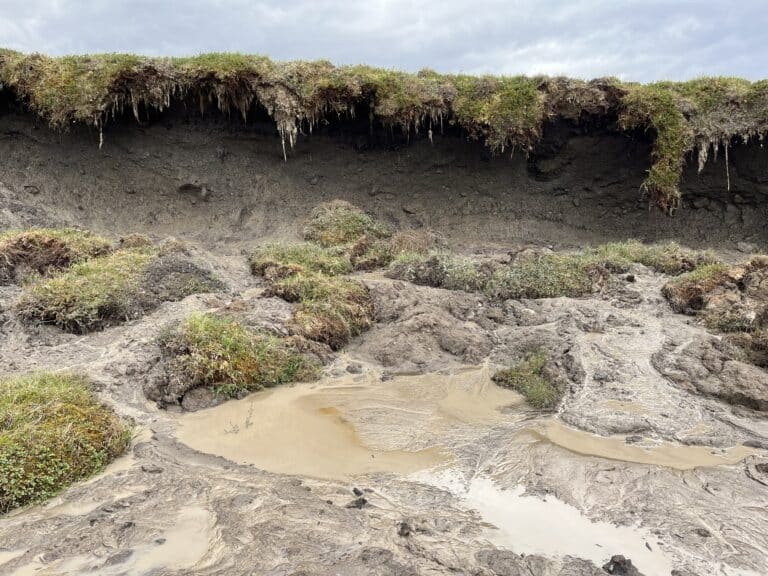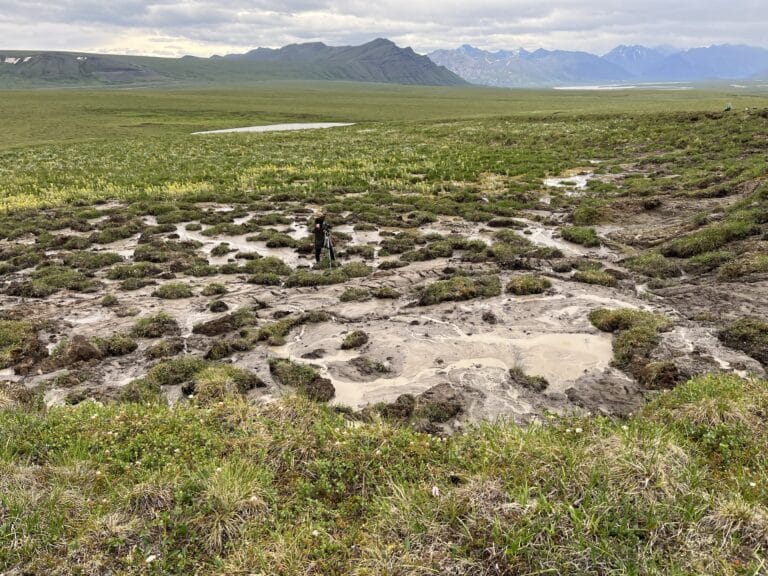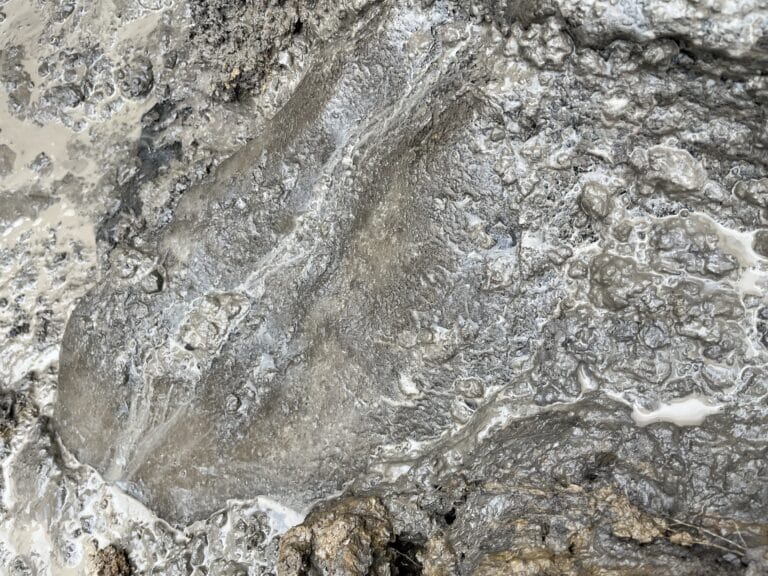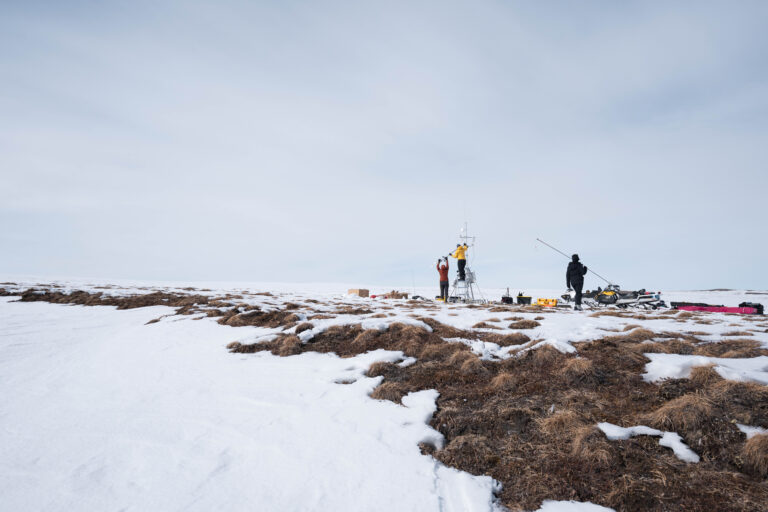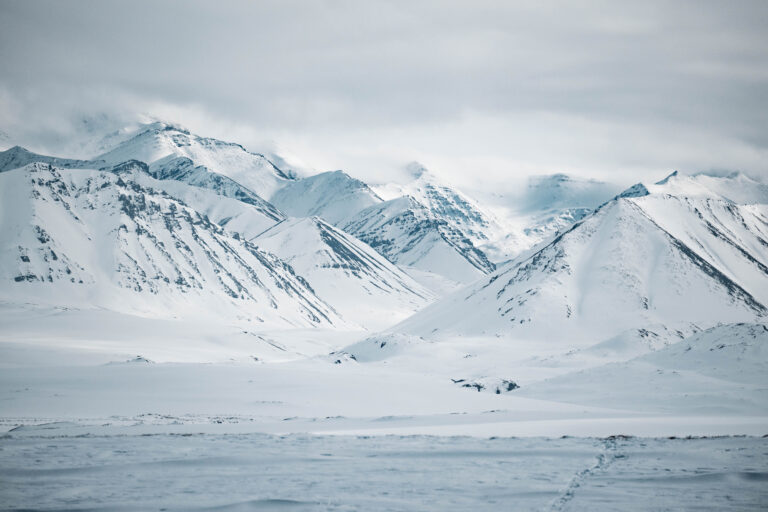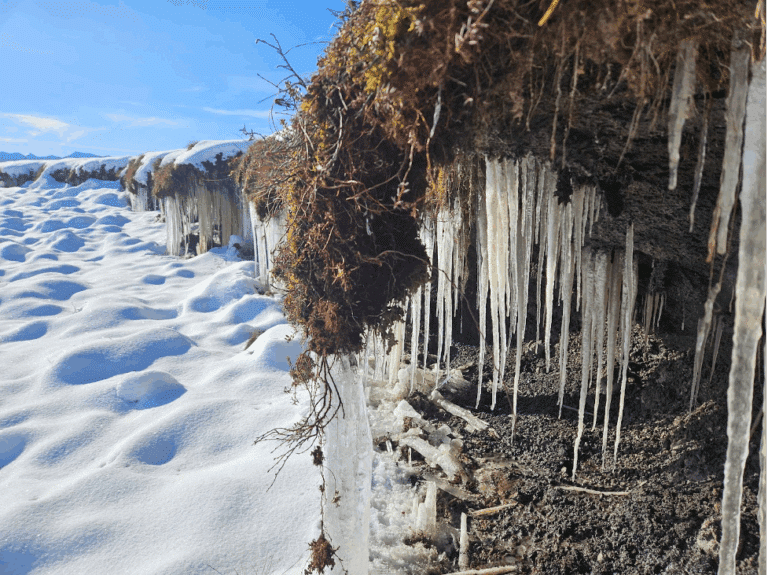| Instrument | Measurement | Unit | Description |
|---|---|---|---|
| LI-7500A | CO2 Concentration | µmol mol-1 | Measures CO2 molecules in an open optical path using infrared light |
| LI-7500A | H2O Concentration | mmol mol-1 | Measures H2O molecules in an open optical path using infrared light |
| LI-7700 | CH4 Concentration | µmol mol-1 | Measures CH4 molecules in an open optical path using laser |
| CSAT3B | 3D Anemometer | m s-1 | Measures wind speed in three dimensions by sonic pulse |
| CSAT3B | 3D Anemometer | degree | Measures wind direction in three dimensions by sonic pulse |
| CSAT3B | 3D Anemometer | °C | Derives air temperature from the speed of sound |
| CNR4 | Albedo | W m-2 | Albedo is a fraction term of the solar (short wave) radiation that is reflected on a given surface |
| CNR4 | Long Wave in | W m-2 | Downwelling longwave radiation (4.5 to 42 μm) |
| CNR4 | Long Wave out | W m-2 | Upwelling longwave radiation (4.5 to 42 μm) |
| CNR4 | Short Wave in | W m-2 | Downwelling shortwave radiation (305 to 2800 nm) |
| CNR4 | Short Wave out | W m-2 | Upwelling shortwave radiation (305 to 2800 nm) |
| CNR4 | Net Radiation | W m-2 | Term derived from the total downwelling radiation minus the total upwelling radiation |
| PQS1 | PAR Density in | µmol m-2 s-1 | Downwelling shortwave radiation (400 to 700 nm) – light spectrum that plants can absorb in order to photosynthesize |
| PQS1 | PAR Density out | µmol m-2 s-1 | Upwelling shortwave radiation (400 to 700 nm) – light spectrum that plants can absorb in order to photosynthesize |
| HMP155A | Relative Humidity | % | The ratio of water vapor present in the air at a given time relative to the absolute capacity of the air at a given temperature |
| HMP155A | Air Temperature | °C | The ambient temperature of the air at a given time |
| SR50A-EE | Snow Depth | m | measures the distance from the sensor to the ground by sonic pulse |
| HFP01 | Soil Heat Flux | W m-2 | Measures the thermal energy moving up and down in the soil at a given depth |
| HydraProbe | Volumetric Water Content | m3 m-3 | Ratio of the volume of water to the volume of soil at a given depth |
| HydraProbe | Soil Temp | °C | The temperature of the soil at a given depth |
photo by Tiffany Windholz
About the Extreme Thaw Observatory
(at RTH89, North Slope of Alaska)
Central to this project stands the eddy covariance tower. The tower carries an array of instrumentation providing the year-round tracking of CO2 and CH4 gas exchange at half-hourly timesteps. The site also gathers environmental data, such as wind speed and direction, air temperature, humidity, precipitation, longwave and shortwave radiation, soil temperature and moisture, and ground heat exchange.
Combined, we can use all these instruments to try to better understand the relationships and feedbacks between site environmental conditions and the magnitude and timing of greenhouse gas fluxes.
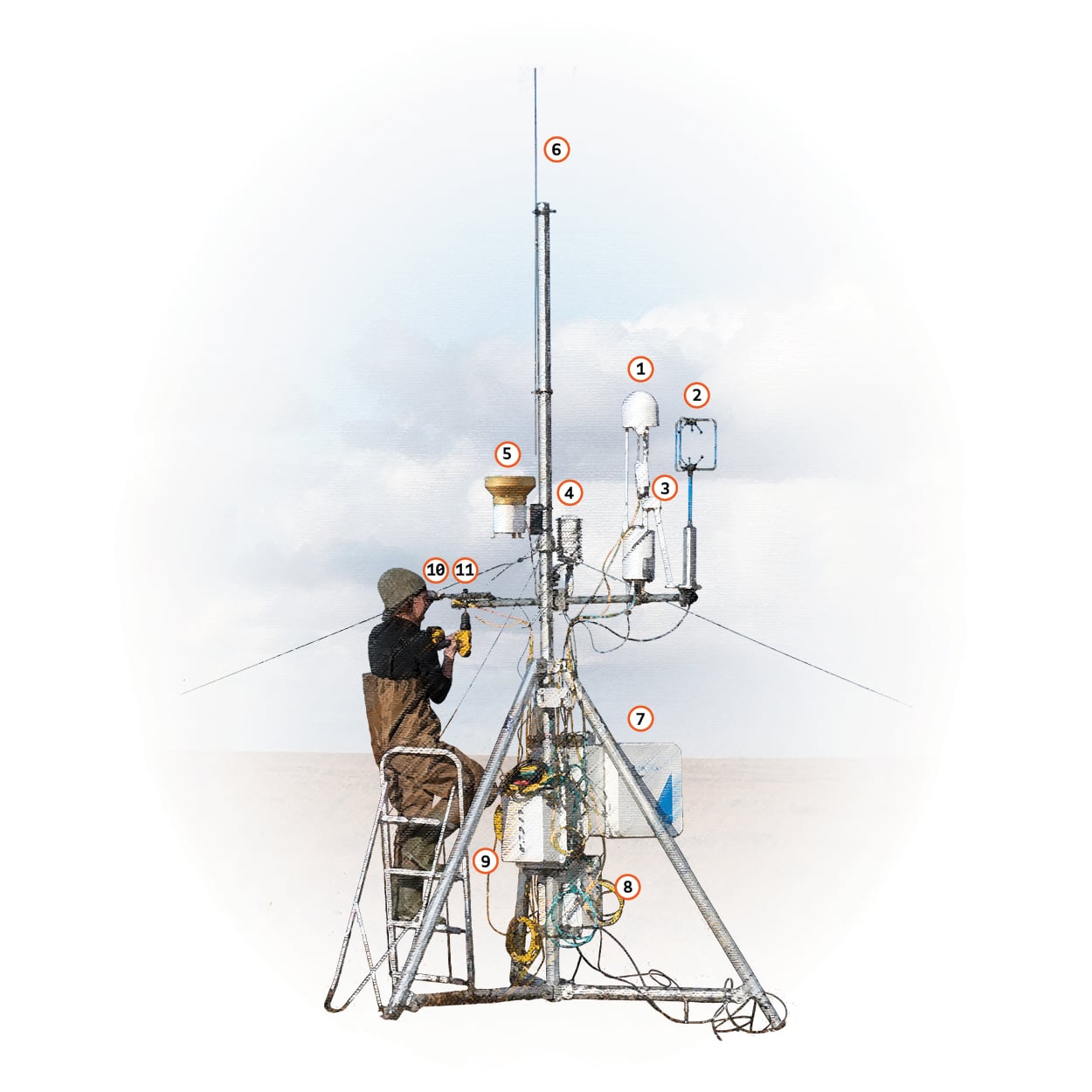 graphic by Julianne Waite
graphic by Julianne Waite
Parts of an eddy flux tower
- Methane analyzer: measures the density of methane in the air
- Sonic anemometer: measures wind direction and speed in three dimensions, used to determine fluxes of methane and carbon dioxide
- Carbon dioxide analyzer: uses infrared technology to measure carbon dioxide and water vapor density in the air (attached to the angled arm)
- Radiation shield: houses air temperature and relative humidity probes, with a shield that protects the probe from precipitation or direct sunlight that would impact the measurements
- Precipitation gauge: measures the amount of rain and snow
- Lightning rod: discharges any lightning strikes that hit the highest point of the tower and prevents electrical surges or damage to tower equipment
- Processing center: the main “brain” of the flux tower that reads data from other instruments, processes them, and centralizes the output
- Additional processing: houses the “brain” of additional environmental measurements like soil temperature and soil moisture, from probes buried in the ground at various depths
- Pump and washer fluid: used to keep parts of the methane analyzer (#1) clean
- Net radiometer: measures incoming and outgoing radiation
- Photosynthetically active radiation (PAR) sensor: measures the amount of plant-usable light for photosynthesis
In order to provide power to this remote station, our team constructed a renewable energy system using solar panels and a wind turbine. These energy sources charge a battery bank, allowing the station to remain powered during the dark Arctic winter. This is crucial for our research—winter dynamics are a highly understudied, but vital part of understanding the Arctic under changing conditions.
The instrumentation currently deployed on the site includes:
- Gas analyzers: Licor LI-7500A and LI-7700
- Sonic anemometer: Campbell Scientific CSAT3B
- Net radiation: Kipp & Zonen CNR4
- Air temperature and relative humidity: Vaisala HMP155A
- Photosynthetically active radiation (PAR): Kipp & Zonen PQS1
- Snow depth: Campbell Scientific SR50A-EE
- Soil moisture and temperature: Stevens HydraProbe (8, 18, 28 cm depths)
- Soil heat flux: Hukseflux HFP01 at 2 locations (~ 6 cm depth).
Join Us in Protecting the Arctic
Your support makes this research possible. Together, we can safeguard fragile tundra ecosystems and advance solutions to the climate crisis.
Contact our Development Team (development@woodwellclimate.org) or Foundation Relations Team (fr@woodwellclimate.org) to learn how you can help.
Thaw slumps are increasing due to human-caused climate change, releasing greenhouse gases and contributing to a climate warming positive feedback loop. Reductions in carbon emissions are imminently necessary, and will pay dividends in reducing loss and damage in the Arctic and globally.Dr. Kyle Arndt, Research Scientist




